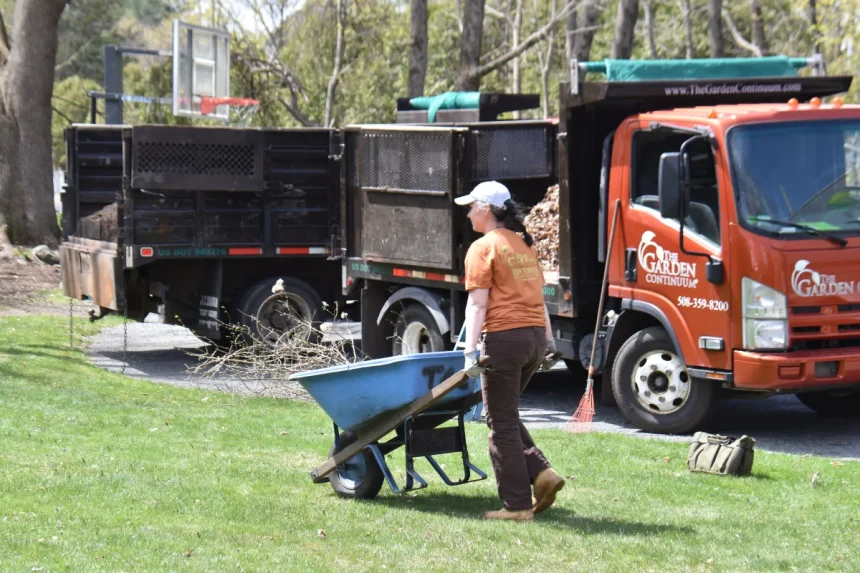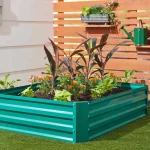Ready to transform your garden this spring? With the right spring gardening tips, you can create a vibrant, thriving outdoor space that blooms all season long. At Aura, we’re passionate about making gardening simple and rewarding for everyone, from beginners to seasoned pros. Drawing from expert insights and real-world experience, we’ve crafted a concise guide to help you master spring garden preparation, from soil health tips to choosing the perfect cool-season vegetables. Whether you’re starting seeds or pruning shrubs, these practical steps will set you up for a gorgeous garden. Let’s dig into the essentials and get your hands in the dirt!
Plan Your Spring Garden Like a Pro
Starting your spring garden off right means planning ahead. First, assess your garden space carefully. Look at how much sun each area gets, check your soil type, and think about drainage. Knowing your garden’s conditions helps you pick the best plants that will thrive.
Next, create a planting schedule. Spring has different planting windows depending on your USDA hardiness zone. Jot down when to start seeds indoors, when to transplant outside, and the best time for cool-season vegetables and flowers. Staying on schedule makes a big difference in a successful garden.
Finally, gather essential tools before you get started. Make sure you have sharp pruners, a quality trowel, gloves, and some basic gardening tools that are clean and ready to go. Keeping tools maintained ensures your work is easier and more efficient throughout the season.
Prepare Your Garden for Planting
Spring garden preparation starts with a good cleanup. Remove any winter debris like dead leaves, branches, and old mulch to give your plants room to grow and reduce pests. Clearing this away helps improve air circulation and sunlight exposure for your garden beds.
Next, focus on improving soil health. Test your soil and add organic matter like compost or aged manure to boost nutrients and structure. Healthy soil retains moisture better and supports strong root growth, which is essential for cool-season vegetables and spring flowers.
Finally, apply mulch to help keep soil moist and control weeds. Mulching creates a barrier that reduces evaporation and stops weeds from taking over your garden. Use organic mulch like wood chips or straw to also enrich the soil as it breaks down over the season.
Taking these steps sets a solid foundation for a thriving spring garden. For more detailed tips on caring for your soil and garden tools, check out our guide on garden preparation and maintenance.
Planting Tips for a Vibrant Spring Garden
Choosing the right plants is key to a thriving spring garden. Focus on cool-season vegetables like lettuce, spinach, and peas, which do well in the spring coolness. Consider companion planting to boost growth and keep pests at bay—for example, planting marigolds near tomatoes.
Starting seeds indoors gives you a jumpstart, especially in colder USDA hardiness zones. Use seed starting indoors kits or simple trays with quality seed starting mix. Once the danger of frost passes, you can transplant these seedlings outside or start seeds directly in the garden if your soil is ready.
Dividing and transplanting perennials is another great way to refresh your garden. Early spring is perfect for splitting overgrown plants to promote healthier blooms and keep your garden looking full. Just dig up the plant, separate the roots, and replant them in well-prepared soil.
By choosing the right plants, starting seeds properly, and managing perennials, you set up your spring garden for vibrant growth all season long.
Maintain Your Garden for Long-Term Success
Keeping your spring garden thriving means staying on top of a few key tasks throughout the season. Here’s how to maintain your garden for lasting health and beauty:
Prune and Deadhead
Regular pruning helps your plants grow stronger and encourages more blooms. Cut back dead or damaged branches on shrubs and remove spent flowers by deadheading. This not only tidies up the garden but also redirects the plant’s energy toward new growth.
Water and Fertilize Wisely
Water your garden deeply but less often to promote strong root development. Early morning watering reduces evaporation and helps prevent diseases. Use fertilizers suited to your plant types and soil needs—organic options like compost or balanced slow-release fertilizers work well. Avoid over-fertilizing, which can harm plants and the environment.
Protect Against Pests and Frost
Keep an eye out for common spring pests such as aphids and slugs. Use natural methods like companion planting or insecticidal soap to control infestations early. Also, be prepared for late spring frosts by covering vulnerable plants with row covers or cloches during cold nights.
Consistent care in these areas will ensure your spring garden not only looks great now but continues to flourish all season long. For more detailed tips on gardening tasks, check out our gardening tips and tricks.
Add Style and Functionality to Your Garden
Updating your garden’s look and feel makes spring gardening more enjoyable and boosts outdoor living space. Start by refreshing hardscaping—clean walkways, fix cracks in patios, and power wash decks and garden furniture. This simple step gives your space a fresh, inviting vibe.
Incorporate native plants and pollinators to support local ecosystems. Native plants are hardy, low-maintenance, and attract bees, butterflies, and hummingbirds. This not only helps your garden thrive but also supports biodiversity.
Containers and raised beds add style and make gardening easier, especially if space or soil quality is limited. Use containers to grow herbs, flowers, or cool-season vegetables. Raised beds improve drainage, prevent soil compaction, and allow you to customize soil health. Plus, they’re perfect for companion planting to maximize space and pest control.
Tips to add style and function:
- Clean and repair pathways, patios, and garden furniture
- Choose native plants suited to your USDA hardiness zone
- Attract pollinators with flowering natives and herbs
- Use containers to grow small plants and vegetables
- Build or refresh raised beds for better soil control
- Combine plants that grow well together with companion planting
By blending these elements, you create a garden that looks good and works well throughout spring and beyond.
Regional Spring Gardening Tips
Adapt to Your Climate
Spring gardening varies a lot depending on where you live in the U.S. Knowing your USDA hardiness zone helps you pick plants that will thrive in your area’s temperature range. For example, gardeners in northern states should focus on cool-season vegetables like lettuce and broccoli, while those in warmer southern areas can start planting heat-loving vegetables sooner. Always check local last frost dates — planting too early can expose your garden to unexpected frosts that damage young plants.
Leverage Local Resources
Use local extension services, gardening groups, and nurseries for advice tailored to your region. They know the best plants, soil amendments, and pest control methods for your area. Many states also offer free soil testing, which gives you detailed soil health tips to improve your garden’s success. Plus, consider native plants for spring that attract local pollinators and require less maintenance — a smart move that supports your environment and boosts garden health naturally.







